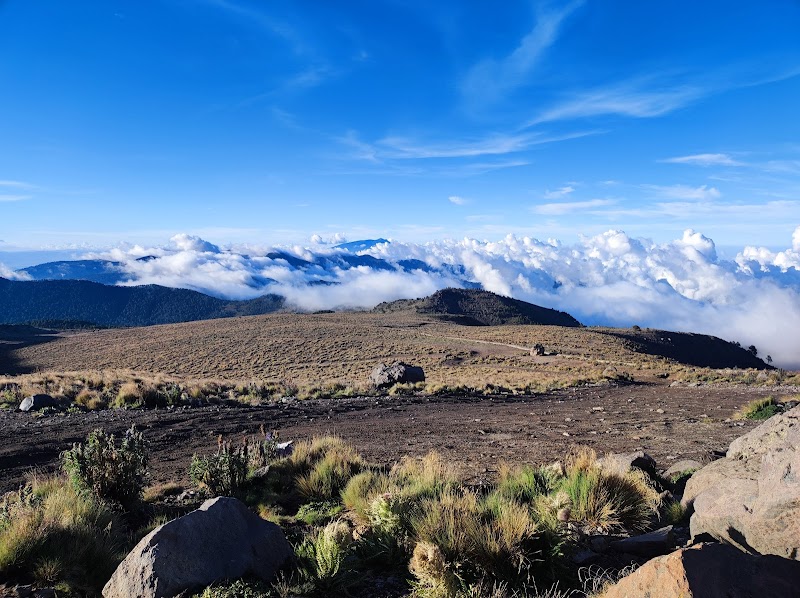
Conquering Orizaba: The Ultimate Guide to the Mountain Bike Race in Veracruz
Experience the raw challenge of the Orizaba Mountain Bike Race, where Veracruz’s rugged trails and towering peaks test rider skill and endurance. Discover the route’s unique terrain, practical prep advice, and the thrill of riding next to nature's unyielding forces.
Hydrate Early and Often
Start your ride well-hydrated and carry sufficient water; altitude and physical exertion demand constant hydration to prevent fatigue and cramps.
Choose Proper Footwear
Wear mountain biking shoes with solid grip and ankle support to handle rocky, uneven terrain and prevent slips or injuries.
Arrive Before Dawn
Early starts enable cooler riding conditions and offer a chance to experience the forest’s quiet awakening, helping prepare mentally and physically.
Prepare for Variable Terrain
Train on different surface types—rocky, root-laden, muddy—to navigate the race’s technical sections confidently and safely.
Conquering Orizaba: The Ultimate Guide to the Mountain Bike Race in Veracruz
The Orizaba Mountain Bike Race demands more than just speed—it challenges your resilience across Veracruz’s rugged terrain with a route that speaks directly to the rider’s grit. Stretching roughly 45 kilometers with an elevation gain nearing 1,200 meters, this race weaves through dense pine forests that seem to lean in, as if sizing up the contenders. Expect trails that shift between rocky inclines, slippery root sections, and quick stretches of packed dirt, each surface eager to test your skills and your bike’s handling.
The path traces the natural ridges of the Sierra Madre Oriental, revealing spectacular panoramas of Pico de Orizaba, Mexico’s highest peak, which watches over the course like a silent guardian. Rivers along the route don’t just flow—they dare you to keep pace, their currents pushing you forward with a persistent strength. These water crossings can be tricky, especially after rain, introducing strategic moments where balance and control become critical.
Riders should prepare for the altitude—starting around 1,200 meters and climbing to nearly 2,400 meters means thinner air and a demanding cardiovascular effort. Hydration becomes an indispensable ally here; water stations exist but carrying your own supply is essential. Footwear with firm grip and ankle support is recommended due to the uneven and often exfoliating terrain beneath tire and foot.
Morning starts are best. Temperatures are cooler, and the forest breathes softly with morning mist, offering brief respite before the sun asserts itself. Even with an adrenaline-fueled race environment, the natural rhythms of the trail encourage respect and attentiveness.
Timing your race to coincide with the drier months, typically November through March, lessens the risk of mud flats and slippery rocks but be prepared for occasional gusts of cold wind that sweep down from the peaks. Post-race, Orizaba city offers warm local hospitality, perfect for recovering muscles and reflecting on the natural forces you engaged with during the race.
This is not a race to merely conquer—it’s a dialogue between rider and mountain, each demanding mastery of endurance, technique, and respect. Whether you’re a seasoned mountain biker or a determined first-timer, the Orizaba Mountain Bike Race delivers an intensely practical, thrilling encounter with one of Mexico’s most compelling outdoor stages.
Nearby Trips
All Adventures
Boat Charters
Water Activities
Adventures near Orizaba, Veracruz
Discover the unique and memorable adventures that make Orizaba, Veracruz special.
Frequently Asked Questions
What is the total distance and elevation gain of the Orizaba Mountain Bike Race?
The race covers approximately 45 kilometers, with an elevation gain of about 1,200 meters, demanding both endurance and technical skills.
Are there water stations along the race course?
Yes, a few strategically placed water stations exist, but riders are strongly encouraged to carry their own hydration given the altitude and exertion level.
Is prior mountain biking experience necessary to participate?
While beginners can attempt it, the rocky and technical terrain along with elevation challenges make the race best suited for riders with at least moderate mountain biking experience.
What kinds of wildlife might be seen during the race?
Riders may spot local birds like the Vermilion Flycatcher or the occasional agouti on quieter stretches; the forest exudes life, moving deliberately around the course.
What historical or cultural significance does Orizaba hold?
Orizaba has a rich colonial history and was once a key commercial hub; its architecture and cultural festivals offer riders a rewarding experience off the trail.
How can riders prepare for the altitude changes on the course?
Acclimatizing in Orizaba city a day or two before the race helps, as does pacing yourself early on to avoid altitude sickness during steep ascents.
Recommended Gear
Hydration Pack
Carries ample water and supplies hands-free, crucial for staying hydrated across long stretches without water stations.
Mountain Biking Shoes with Good Traction
Firm grip and ankle support protect you on uneven, root-filled and rocky paths common during the race.
Lightweight Layered Clothing
Allows riders to adjust for temperature swings typical of high-altitude environments.
Compact First Aid Kit
Provides basic supplies for cuts, scrapes, or minor injuries encountered on technical trails.
Local Insights
Hidden Gems
- "Mirador La Carbonera – a lesser-known viewpoint offering sweeping views of the mountain range and Orizaba city below."
- "Los Secretos Waterfalls – small cascades along the later trails that provide refreshing stops during training rides."
Wildlife
- "Vermilion Flycatcher"
- "Agouti"
- "Mexican Jay"
- "Occasional sightings of Black Hawks"
History
"Orizaba city served as an essential stop on colonial trade routes and its historic train station and port architecture reflect an industrial past deeply woven with Mexican Railroads."
